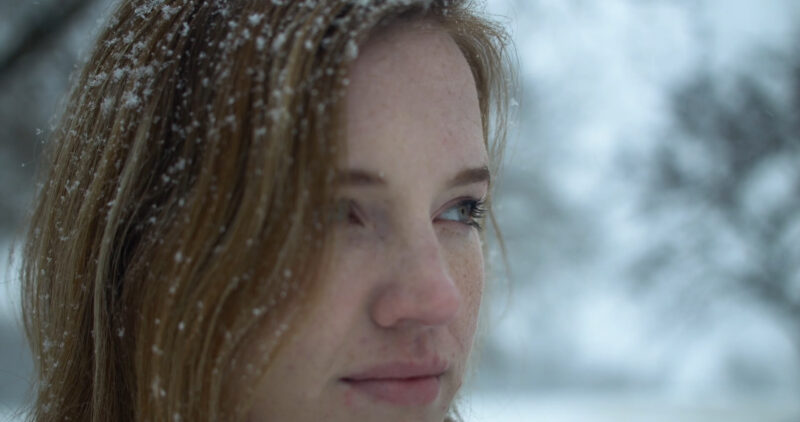Winter’s cool weather often leads to an increase in skin-related issues. Recognizing symptoms early and applying appropriate treatments can significantly alleviate discomfort and prevent further complications.
In the following sections, I will provide you with the most common issues, along with prevention and proper treatment.
1. Winter Rash
Winter Rash is a common skin condition that occurs due to the cold, dry winter air. It results in irritated, dry, and itchy skin that can make the colder months uncomfortable for many.
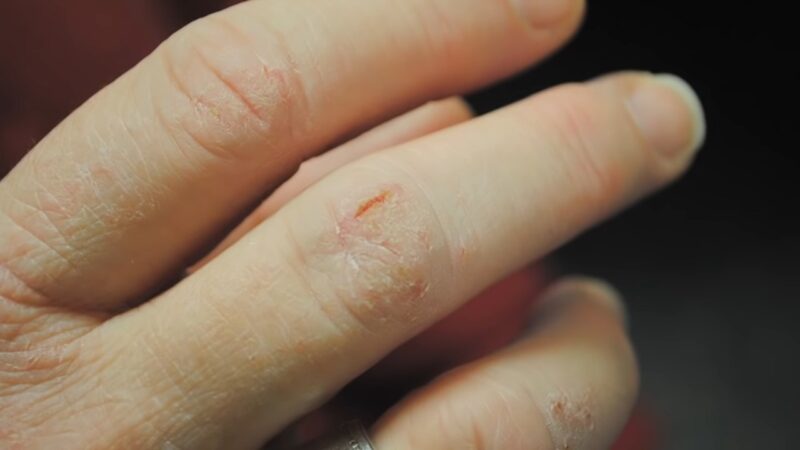
Symptoms
- Redness
- Itching
- Dry, cracked, or scaly skin
- Bumps and blisters
- Burning sensation
Prevention
- Maintain Skin Moisture: Use a humidifier in your home to keep the air moist. Apply moisturizing lotions or creams immediately after bathing to lock in moisture.
- Gentle Skin Care Products: Opt for mild, fragrance-free soaps and skin care products to avoid further irritation.
- Dress Appropriately: Wear layers to protect your skin from harsh winds and cold temperatures. Ensure the layer closest to your skin is made of a soft, breathable material.
- Stay Hydrated: Drinking plenty of water helps maintain your skin’s natural moisture balance.
If you are facing dry skin even after moisturizing, check out these common symptoms.
Proper Treatment
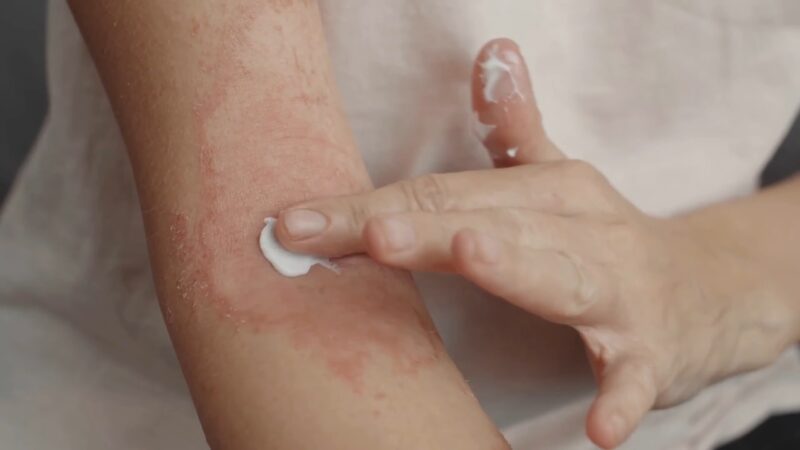
Medications
- Topical Moisturizers: Essential for restoring the skin’s barrier. Look for products containing ceramides, glycerin, or hyaluronic acid.
- Cortisone Creams: Over-the-counter cortisone creams can reduce inflammation and itching.
Natural Remedies
- Oatmeal Baths: Soothing for itchy, irritated skin. Add colloidal oatmeal to lukewarm bathwater and soak for relief.
- Coconut Oil: A natural emollient that can help moisturize dry skin and reduce irritation.
- Aloe Vera: Known for its soothing properties, aloe vera can calm the skin and reduce redness.
Dr. Luna Rey recommends using Aloe Vera since it offers a wide range of benefits for the skin.
“Aloe Vera is a superhero for moisturizing and calming inflamed skin. It contains antioxidants, vitamins, and enzymes that neutralize free radicals and reduce oxidative stress. This powerful plant can penetrate deep into the skin, targeting inflammation at its source for long-lasting relief.”
2. Rosacea
Rosacea is a chronic skin condition characterized by facial redness and often small, red, pus-filled bumps. It typically affects the central third of the face, especially the nose, and has periods of exacerbation and remission.
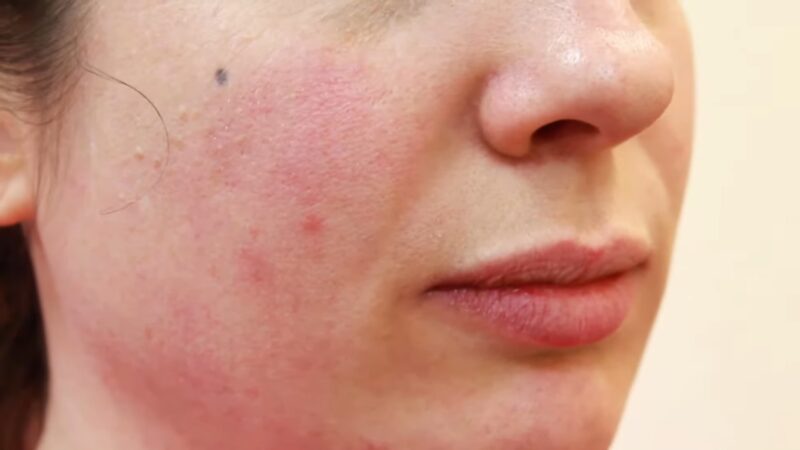
Symptoms
- Persistent redness on the face
- Small red bumps or pimples
- Visible blood vessels
- Eye irritation in some cases
Prevention
- Sun Protection: Use a broad-spectrum sunscreen daily. Wear hats and seek shade when outdoors.
- Avoid Triggers: Identify and avoid personal triggers, which may include hot drinks, spicy foods, alcohol, and extreme temperatures.
- Gentle Skin Care: Use mild, non-irritating skin care products. Avoid rubbing or scrubbing the face.
Proper Treatment
Medications
- Topical Antibiotics: Reduce inflammation and redness.
- Oral Antibiotics: For more severe cases to reduce inflammation.
- Topical Acne Treatments: Help clear up pimples and bumps.
Natural Remedies
- Green Tea Creams: Anti-inflammatory properties may reduce redness.
- Licorice Extract: Known for its ability to soothe irritation and reduce redness.
3. Cold Urticaria
Cold Urticaria is an allergic reaction to cold temperatures, resulting in hives or large, red welts on the skin. The reaction usually occurs after exposure to cold air or water.
Symptoms
- Redness
- Swelling
- Itching
- Hives after exposure to cold
Prevention
- Avoid Cold Exposure: Dress warmly in cold weather, covering all exposed skin. Warm up gradually after being in the cold.
- Carry Emergency Medication: If prescribed by a doctor, carry epinephrine in case of a severe reaction.
Proper Treatment
Medications
- Antihistamines: Reduce itching, swelling, and hives.
- Epinephrine: For severe reactions, immediate use can be life-saving.
Natural Remedies
- Warm Baths: Gradually warming the skin can relieve symptoms.
- Vitamin C: May help in reducing histamine levels in the body.
4. Psoriasis
Psoriasis is an autoimmune condition that speeds up the life cycle of skin cells, causing them to build up rapidly on the surface of the skin. The extra skin cells form scales and red patches that are itchy and sometimes painful.

Symptoms
- Raised, red, inflamed patches of skin
- Whitish-silver scales or plaques on the red patches
- Dry skin that may crack and bleed
- Itching, burning, or soreness
According to Suzy Davenport: Psoriasis affects about 2-3% of the global population, with plaque psoriasis being the most common form.
Prevention
- Moisturize Regularly: Keeping skin moist can reduce dryness, itching, and the severity of outbreaks.
- Limit Alcohol Consumption: Alcohol can exacerbate symptoms.
- Stress Management: Stress is a known trigger for flare-ups.
Proper Treatment
Medications
- Topical Treatments: Corticosteroids, vitamin D analogues, and topical retinoids.
- Light Therapy: Exposing the skin to ultraviolet light under medical supervision.
- Systemic Medications: For severe cases, drugs like methotrexate or cyclosporine.
Natural Remedies
- Aloe Vera: Can reduce redness and scaling.
- Turmeric: Has anti-inflammatory properties that might reduce symptoms.
5. Eczema
Eczema, or atopic dermatitis, is a condition that makes your skin red and itchy. It’s common in children but can occur at any age. Eczema is long-lasting (chronic) and tends to flare periodically.
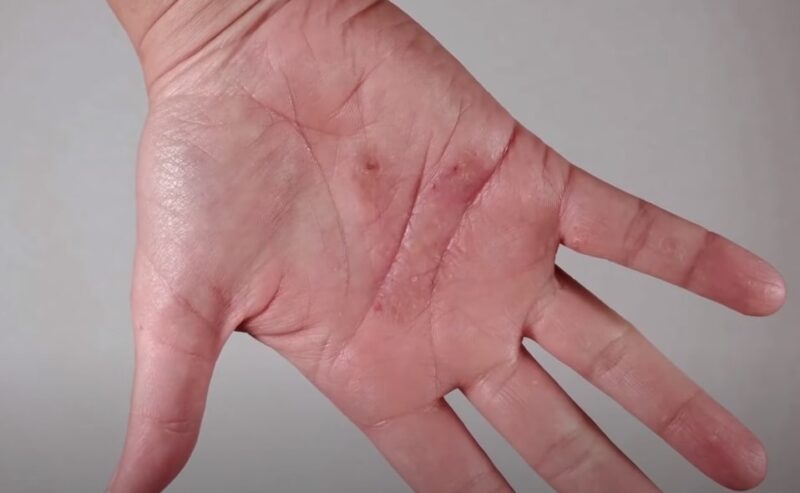
Symptoms
- Itchy skin
- Red to brownish-gray patches, especially on the hands, feet, ankles, wrists, neck, upper chest, eyelids, elbows, and knees
- Small, raised bumps that may leak fluid when scratched
- Thickened, cracked, dry, scaly skin
Eczema affects over 31 million Americans, with atopic dermatitis being the most common type of eczema.
Prevention
- Avoid Triggers: Common triggers include dry skin, irritants, stress, and allergens.
- Moisturize Daily: Helps maintain the skin barrier and prevent flare-ups.
- Gentle Skincare: Use fragrance-free, mild soaps and detergents.
Proper Treatment
Medications
- Topical Steroids: To reduce inflammation and itching.
- Calcineurin Inhibitors: Help maintain barrier function of the skin.
- Biologic Drugs: For severe cases, targeting underlying inflammation.
Natural Remedies
- Coconut Oil: Moisturizes and soothes eczema-prone skin.
- Oatmeal Baths: Soothe itching and help moisturize the skin.
6. Raynaud’s Disease
Raynaud’s Disease affects blood flow to certain parts of the body, usually the fingers and toes, leading to numbness and color changes in response to cold temperatures or stress.
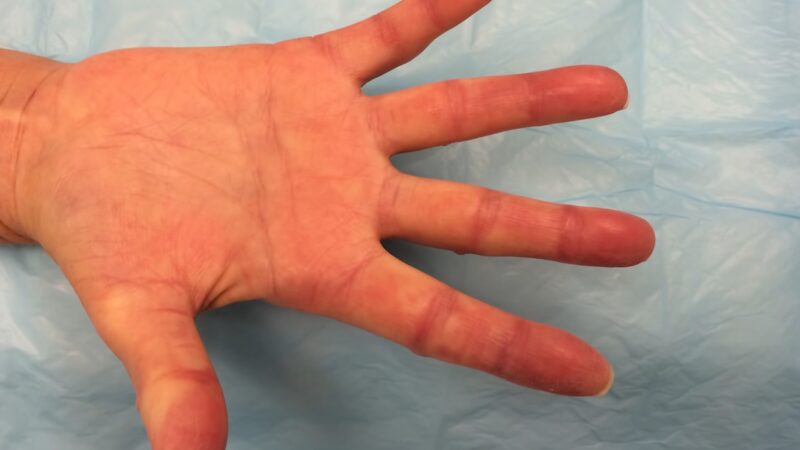
Symptoms
- Color changes in the skin in response to cold or stress
- Numbness or cold sensations in affected areas
- Throbbing, tingling, or pain upon warming or stress relief
Fredrick M Wigley states that Raynaud’s phenomenon affects up to 5% of the population, with women being more likely to develop the condition than men.
Prevention
- Stay Warm: Keep the body, especially hands and feet, warm in cold conditions.
- Stress Management: Practice relaxation techniques to manage stress levels.
- Avoid Smoking: Smoking can exacerbate symptoms by affecting blood flow.
Proper Treatment
Medications
- Calcium Channel Blockers: Help improve blood flow by dilating blood vessels.
- Vasodilators: Apply topical creams to affected areas to help relax and open blood vessels.
Natural Remedies
- Fish Oil: May improve blood flow.
- Ginkgo Biloba: Thought to dilate blood vessels and improve circulation.
FAQs
What is the number 1 skin disease?
The most common skin disease worldwide is acne, characterized by pimples, blackheads, and whiteheads.
What is the most serious skin condition?
Melanoma, a type of skin cancer, is considered the most serious skin condition due to its potential to spread and become life-threatening.
What is the best oil for skin in winter?
In winter, jojoba oil is a great choice for skin. It’s lightweight, moisturizing, and helps combat dryness.
How to disinfect skin?
To disinfect skin, use isopropyl alcohol (70% or higher concentration) by applying it gently to the skin surface. Avoid sensitive areas and broken skin. Rinse with water afterward.
The Bottom Line
Managing skin health during the colder months requires awareness and proactive care. Adopting appropriate preventive measures and treatments can help mitigate discomfort and maintain skin integrity, ensuring well-being throughout the winter season.

